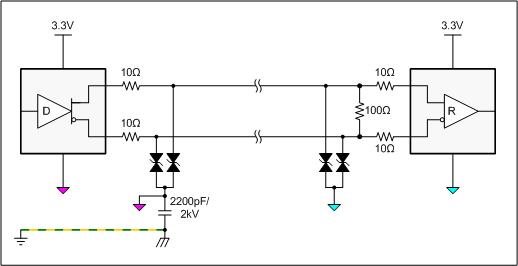Hello,
I have to protect 7 differential lines (4 lines in one direction and 3 in the other direction) against transients; I use AM26LV31E and AM26LV32E as drivers and receivers on both sides of a 100 m cable. The maximum frequency is about 1 MHz.
I have very little space on one end, and little space on the other end is always fine.
Now I have to find some suitable protections. As AM26LV31E has an absolute maximum voltage of 6 V, I think to use PESD5V0S1BLD from NXP to protect output lines (5 V VRWM, 6 V VBR, 130 W, SOD882D package), while I am thinking about using CDNBS08-T12C (12 V VRWM, 13.3 V VBR, 500 W, SOIC8 package) in order to protect the input lines connected to AM26LV31E.
My question is: as this last package is too big, do you think I could use couples of unidirectional TVSs with reduced power rating? Or is there something else to consider? Is 130 W enough for such a protection?
Do you have any more suggestion, keeping in mind the "very little space" issue?
Thanks in advance,
Stefano


